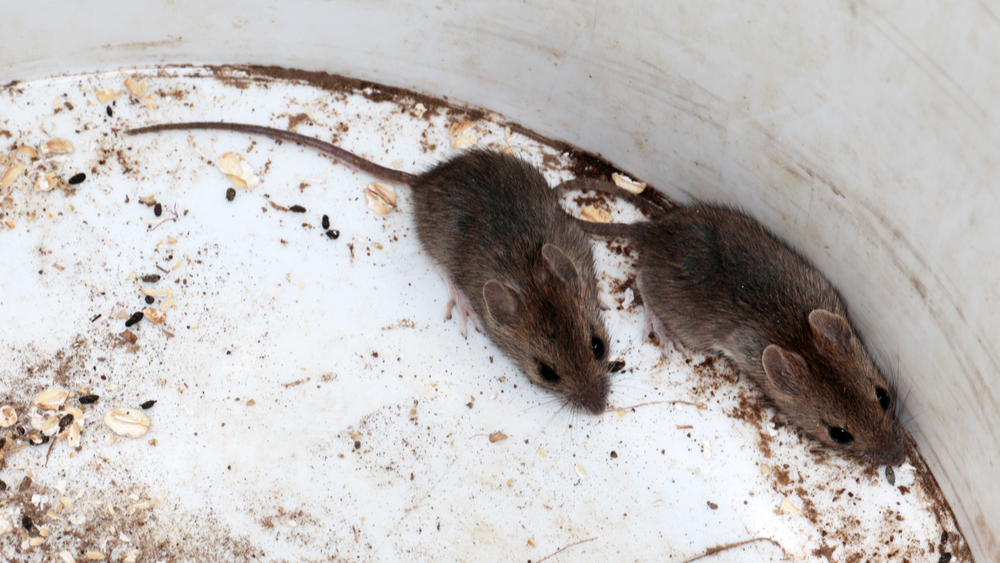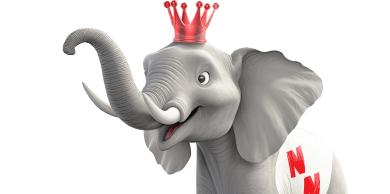Oh sh*t… Are those crumbs… stains… or pest poop on the floor??
Finding pest droppings in your home is never fun. The droppings can be dangerous, plus they’re a sign you have some kind of insect infestation in your house. Let’s go over the most common culprits here in Florida so you can be a pest poop detective! Ready, Sherlock?
What to do when you find pest poop
As you might expect, pest feces can carry bacteria, viruses, parasites, and allergens that can cause serious illnesses in humans. No matter the pest, follow these steps for removing pest poop from your house:
- Identify the droppings using the criteria below, this way you can take steps to prevent the pest in the future.
- Open windows or doors to ventilate the area before cleaning.
- Wear protective gear like rubber gloves and a face mask to avoid contact with skin or breathing in the nastiness.
- Spray the droppings with a disinfectant or bleach solution until thoroughly wet and let soak for 5 minutes.
- Then, use a paper towel to pick up the wet droppings and dispose of them in a sealed plastic bag.
- Once removed, disinfect the area again using a mop or wipes.
- If you find it on fabric, use an enzyme-based cleaner specifically designed for removing organic stains, and wash all infested sheets, pillowcases, or clothing in hot water.
All clean! Now, let’s learn about identifying different insects based on their droppings. This means getting up close and personal. Wear a face mask when going face-to-face with feces.
Identifying Termite Poop
Termites are one of the most common, and most problematic, pests here in Florida. If you see any signs of termite activity, including their droppings, it’s important to call a pest control professional right away.
In Florida, the two most common termites are drywood and subterranean. You can learn all about termites in our pest control library page. Fun fact: termite poop is called frass! Here’s how you can identify termite frass.
Drywood termites
- Appearance: Small, oval-shaped pellets with six concave sides and rounded ends, about a millimeter long (the size of a grain of rice).
- Color: Varies depending on their diet, but ranges from light brown to black, or off-white.
- Locations: Often found in small piles below infested wood. Commonly found inside wooden floors, under carpets, in window sills, attics, crawlspaces, or in wood furniture.
Subterranean termites
- Appearance: These termites put their poop to use. It’s combined with mud to construct their mud tubes and nests. It looks similar to mud or soil.
- Locations: Mud tubes are typically found running along foundations, walls, or other structures. They build the tubes to travel around.
Identifying Bed Bug Poop
Up next are nasty bed bugs. Since not everyone has reactions to bed bug bites, identifying their feces is a good way to detect them and address the problem right away.
- Appearance: These look like small dark spots or stains, usually the size of a pinhead. They’re often described as resembling ground black pepper, ink dots, or marker stains.
- Color: Dark brown or black with a reddish tint.
- Locations: All around your bed including the seams, folds, and tags of mattresses, in the cracks or crevices in the bed frame or headboard. In upholstered furniture or cracks in walls around the bed.
Identifying Spider Poop
Last week, we talked about all spiders, but didn’t touch on spider poop (silly us!). Spider droppings will vary based on the species, but here is some general information to help you identify if that critter’s excrement might be from a spider.
- Appearance: Typically small, thick, liquid drops or splatters that look like tiny paint splatters, ink stains, or spots.
- Color: Color can vary based on what the spider has been eating, but while wet they look black, dark brown, gray, or white. After they dry they’re typically brown or black.
- Locations: If you see spiderwebs, look underneath for signs of spider droppings. They can be on window sills, under furniture, or along baseboards. Outside, spider poop may be found on decks, porches, and siding.
Identifying Roach Poop
Cockroaches, palmettos, and waterbugs are persistent pests here in Florida. Cockroach feces can be especially dangerous, so here’s what to look out for:
- Appearance: Palmetto poop is cylindrical with blunt ends and ridges running lengthwise, a similar shape to a grain of rice. German cockroach feces resemble coffee grounds, black pepper, or dark specks.
- Color: Dark brown to black. Fresh droppings may have a reddish tint.
- Locations: Cockroaches will leave a mess in the same places they search for food, water, and shelter. Common areas include under appliances, inside cabinets, pantries, or drawers, and in humid areas like under sinks, around pipes/drains, and in bathrooms.
Identifying Stink Bug Poop
Stink bugs are primarily outdoor pests, but they’ll seek shelter inside during the cooler months, so it’s normal to see them on walls or windows. And they may leave behind a special surprise too…
- Appearance: Small, round, with a liquid/oily consistency. They look like small drops or splatters on surfaces.
- Color: Brown or dark brown.
- Locations: Windows, doors, and other entry points. On curtains, lamps, or inside houseplants or outdoor plants.
Identifying Mouse/Rat Poop
If you come across poop that is larger than a couple of millimeters, you’re likely looking at mouse or rat poop!
- Appearance: Mouse droppings are oval-shaped (similar to grain of rice), with a smooth, shiny texture when fresh. They’re typically 1/8 to 1/4 inch long. Rat droppings are larger at around 1/2 to 3/4 inch long, and are shaped like jelly beans. As the dung ages, it may turn gray and crumble apart.
- Color: Dark brown to black.
- Locations: Mouse and rats will drop poop along their travel paths, near food sources, and in nesting areas. Common areas include kitchen cabinets, pantries, drawers, under sinks and appliances, and in attics, basements, and garages.

Now you know all about pest poop! Remember, if you find pest poop it’s a sign of a hidden pest infestation, so don’t just sweep it under the rug (literally or figuratively…). Be proactive and contact a pest control professional to do a thorough inspection so you can prevent future poo problems. We love getting down and dirty so you don’t have to.




